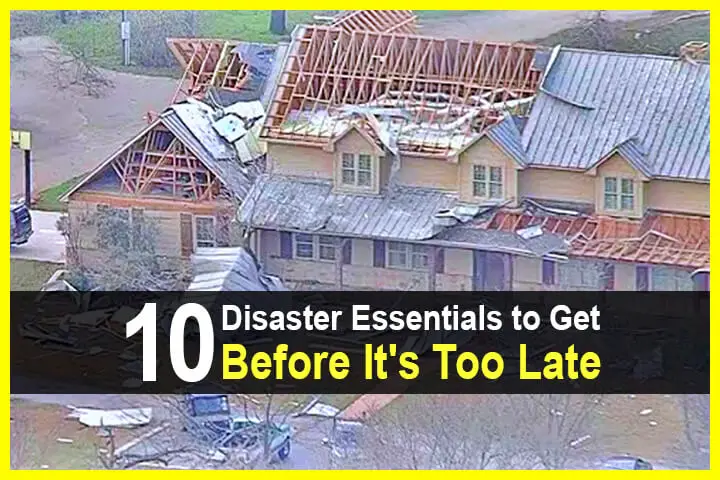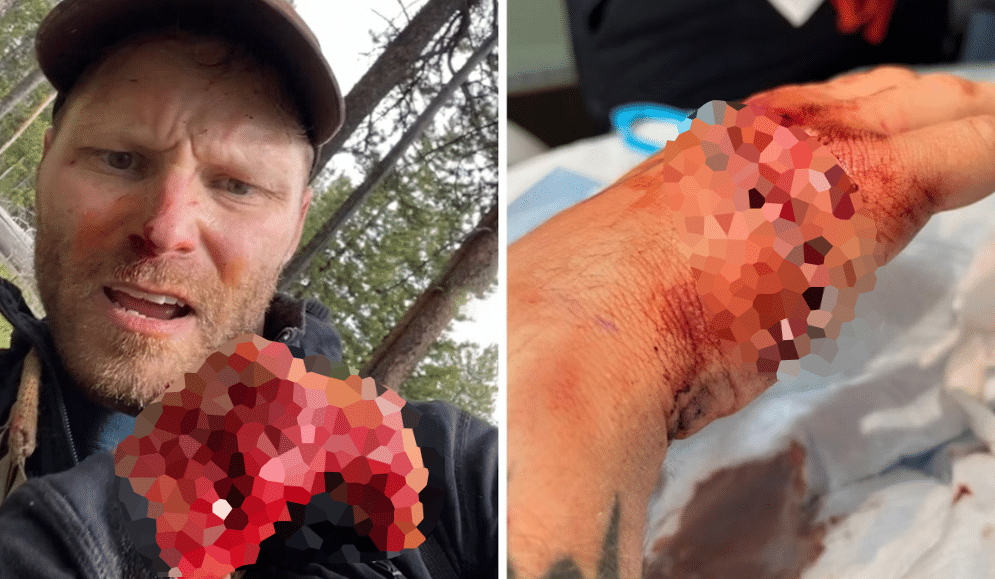Estimated reading time: 8 minutes

Today, we’re going back to basics. If you’re an experienced prepper, you probably have all of these covered. But if you’re a new prepper, then these are the areas you need to focus on first.
The journey into disaster preparedness can be overwhelming, but focusing on a few essential areas can make the process less daunting. Starting with essentials like food, water, and shelter, and expanding to include tools, first aid supplies, communication, and reliable sources of light and warmth, this article outlines ten key areas every prepper should cover.
Want to save this post for later? Click Here to Pin It On Pinterest!
1. Communication
In a major disaster, communication systems will likely go down. Cell phones may not function, and landlines could be down as well. You’ll need to have a way to find out what is happening beyond your four walls. Knowledge is power. You’ll also want to reach out to loved ones.
2. Documents
Keep important documents like identification, insurance policies, and medical records in a waterproof package inside a fireproof box. Consider making digital copies and storing them securely online or on a portable drive.
Additionally, have some cash in small bills because ATMs and card readers might not be working during an emergency. Once the dust settles after a disaster, you’ll need to prove who you are and if you have an insurance claim, you’ll need your policy information.
- Insurance policies should be copied and stored in a separate place in case of a total loss of your home, car, or life. It’s a good idea to have a relative in a different state or city that you trust to have copies of these documents.
- Copies of birth certificates should also be kept safe along with social security cards.
- A copy of your will, trusts, and other financial records should be kept safe.
- Passports are something else you need to keep safe.
3. Fire
You need to be prepared to live by fire. Fire means life. Fire can provide warmth, cook food, purify water, and signal for help. It’s a good idea to have outdoor cooking equipment in your stockpile.
If you have a wood stove or fireplace, you’re already ahead of the game. If not, you’ll need to know how to build a fire ring to keep your fire contained. Have a supply of dry, seasoned firewood cut and ready in case of emergency. Save those old newspapers, lint from the dryer, and other material to make it easier to start a fire.
- Have matches on hand. These are cheap and can be picked up for under a dollar. You can’t have too many matches.
- Lighters are great and even after they’ve run out of butane, you can use the flint mechanism to start a fire.
- Magnesium fire starters are a must. These are reusable. Depending on the brand and size you buy, you can get a hundred or more uses out of them. They are small enough to keep in your car, purse or briefcase.
4. First Aid
A comprehensive first aid kit is indispensable in emergencies. You can never have too much first aid on hand. Remember, you are likely going to be your own doctor. You’ll need to be prepared to take care of minor injuries and some bigger ones like sprains, broken bones, and in some situation stitches.
You’ll also want a first aid manual to guide you through medical emergencies as well. YouTube and Google will not be an option.
You can save money by building your own kit. The prepackaged ones are expensive and don’t always consider the larger emergencies that might come up. Along with the basics, make sure you include items specific to your family.
- If possible, you’ll want to have extra prescription meds on hand. This can be tricky and isn’t always an option, but if you explain to your doctor that you’re preparing for an emergency, they may prescribe you extra.
- Stock up on antibiotics.
- Get familiar with herbal remedies.
- Have a book on hand that identifies medicinal plants.
- Epi pens are expensive, but if you or someone has a life-threatening allergy, you need to have a few.
5. Food
Stock up on non-perishable food items that require little to no preparation. Canned goods, dried fruits, nuts, and protein bars are excellent options. Don’t forget about dietary restrictions and preferences within your household.
People always say if you’re starving, you’ll eat anything, which might be true. However, it’s going to be pretty tough to convince your five-year-old that cold beans are the only option. Food is a source of comfort and provides normalcy. People need to feel safe and comfortable in order to function at their best.
If you have the option to stock the food your family likes and enjoys, why not do it? You’re going to have enough battles; this isn’t one you need to take on.
- The freeze-dried meals are great, but they are expensive. Avoid buying the large buckets marketed as three-days of food. There is no one-size-fits all when it comes to food. Buy what you like.
- Learn how to properly store food to make sure it stays fresh.
- Have fishing supplies, traps, and hunting methods to procure fresh food.
6. Hygiene and Sanitation
Maintaining hygiene standards is crucial to preventing the spread of illness. Pack essentials such as soap, hand sanitizer, toilet paper, and feminine hygiene products.
Also include garbage bags, disinfectant wipes, and a portable toilet or supplies for makeshift sanitation facilities. Learn how to make a toilet out of a five-gallon bucket.
7. Lighting
Darkness can compound the challenges of a disaster. Invest in reliable lighting sources such as flashlights, headlamps, and lanterns. Ensure you have an adequate supply of batteries or rechargeable options. Candles can also provide illumination but use them with caution to prevent fire hazards.
- Solar powered lanterns are an excellent option and are generally very bright.
- A cheap option are the solar yard lights. They are a low light that can act as a nightlight or provide just enough light to allow you to see.
- Glow sticks are another option for nightlights or moving around in the dark.
8. Shelter
Your home may not always be a safe haven during a disaster. Have a plan and supplies for temporary shelter such as tents, tarps, or emergency blankets. These items can provide protection from the elements and maintain body heat if you need to evacuate or find yourself outdoors.
- Identify a secondary shelter now, rather than in the moment. Look for somewhere that is not in danger of being flooded or in an area prone to high wind.
- Learn how to make shelters from natural elements like branches, leaves, and so on.
A versatile toolkit is going to be critical after a disaster. You’re going to be on your own when it comes to making repairs around your house, including your vehicle. Everything will be hands on. You may not be able to use your power tools.
- Include items like a multitool, duct tape, rope, and a wrench or pliers. You can find lists of tools you’ll want to have.
- Include a chainsaw (don’t forget this will need gas) or more reliably an ax or tree saw. You’ll need to chop wood for fires, repairs, and possibly to clear a road.
- Don’t forget to include good work gloves to protect your hands.
- Fire extinguishers are another must.
- Gas shut-off wrench if you don’t already have one.
10. Water
Water is fundamental for survival. This is going to be your most important prep and also your most challenging. Aim for at least one gallon per person per day for a minimum of three days.
Additionally, invest in water purification methods such as water filters or purification tablets. These can help make contaminated water safe for consumption during emergencies. Get creative with your water storage. It’s not always feasible to store a fifty gallons of water in the house.
- Consider water barrels outside. You can purify the water before you drink or use for cooking.
- A swimming pool is another option. The chlorine used to keep the pool clean will evaporate in a couple of days. You can purify for consumption.
- Know where your local watering holes are and have containers for transport.
- Bathtub bladders are an option and can be filled if you know an emergency is coming.
Like this post? Don’t Forget to Pin It On Pinterest!
You May Also Like:
Read the full article here




